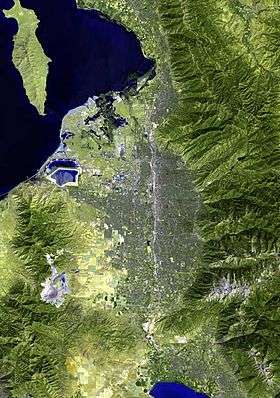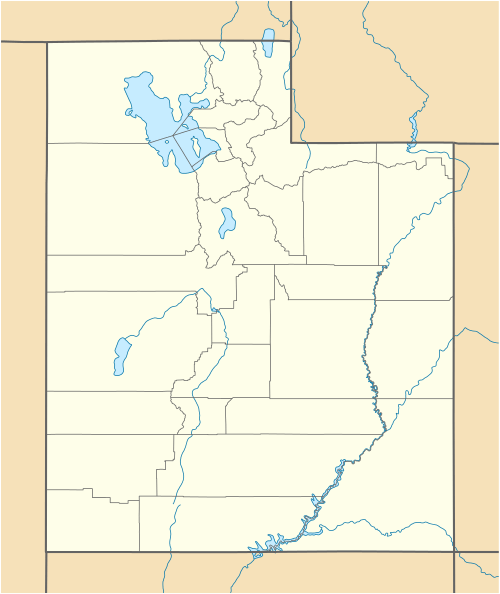Traverse Mountains
| Traverse Mountains | |
|---|---|
 | |
| Highest point | |
| Coordinates | 40°28′19″N 111°52′59″W / 40.47189°N 111.88299°WCoordinates: 40°28′19″N 111°52′59″W / 40.47189°N 111.88299°W |
| Geography | |
 Traverse Mountains | |
| Country | United States |
| State | Utah |
The Traverse Mountains, or sometimes Traverse Range, are an anomalous, geologically complex, east-trending range that separates Salt Lake Valley and Utah Valley in the U.S. State of Utah.[1] Point of the Mountain is colloquially used to refer to the part of this range that separates the Salt Lake City and Provo metropolitan areas, as well as the mountain pass at 40°27′13″N 111°54′38″W / 40.45361°N 111.91056°W,[2] used by the highways and rail arteries that connect the two cities. The Traverse Mountains mark the boundary between the Salt Lake and Provo segments of the Wasatch Fault, and they are themselves much faulted and locally involved in landslides. Lake Bonneville once covered Salt Lake and Utah Valleys and shorelines and deposits from the ice age lake are now etched into the flanks of the Traverse Mountains. Over the past decade it has seen a huge housing boom due to its spectacular views of Salt Lake and Utah counties.
The eastern section of the range (often called Traverse Mountain), is split up between the cities of Lehi and Draper. The Draper portion contains the Suncrest community, while the Lehi portion contains the Traverse Mountain community. The western section of the range is part of the Camp Williams National Guard Training Site.
Air recreation
Two locations on the far west end of the eastern section of the range are Point of the Mountain and Steep Mountain, 6,160 feet (1,878 m),[3] considered to be among the world's premier paragliding and hang gliding destinations in North America.
 (view NNE)-Top of Lake Mountains —
(view NNE)-Top of Lake Mountains —
Lehi-(of SLC); also, Oquirrh Mountains at photo-left, Traverse Mountains -(~8 mi) at photo-right. SLC & Wasatch Range on horizon. NE half of Traverse Mountains showing Hog Hollow and Fort Canyon, (Lone Mountain massif northeasterly; Photo North is rotated 45 Degrees, left; ISS photo)
NE half of Traverse Mountains showing Hog Hollow and Fort Canyon, (Lone Mountain massif northeasterly; Photo North is rotated 45 Degrees, left; ISS photo)
References
| Wikimedia Commons has media related to Traverse Mountains. |
- ↑ U.S. Geological Survey Geographic Names Information System: Traverse Mountains
- ↑ U.S. Geological Survey Geographic Names Information System: Point of the Mountain
- ↑ Utah, DeLorme Atlas & Gazetteer, p. 24-25. (west range terminus)